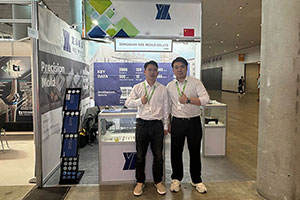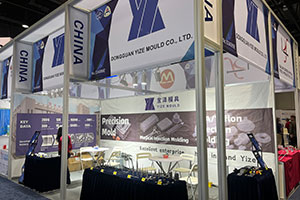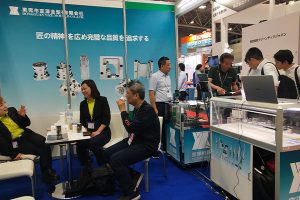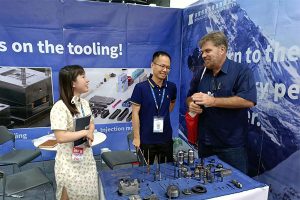Common Problems and Solutions in Tungsten Carbide Processing
Introduction Tungsten carbide, as a high-performance cemented carbide material, is widely applied in fields such as metal cutting and mold manufacturing due to its characteristics of high hardness, high wear […]
Einführung
Tungsten carbide, as a high-performance cemented carbide material, is widely applied in fields such as metal cutting and mold manufacturing due to its characteristics of high hardness, high wear resistance, and high red hardness. However, during the tungsten carbide processing, due to limitations imposed by material properties and processing conditions, a series of problems and challenges often arise. This article will sort out the common problems in tungsten carbide processing and propose corresponding solutions, aiming to provide references for relevant practitioners.
Common Problems in Tungsten Carbide Processing
Chatter Marks during Processing
Chatter marks are one of the common problems in tungsten carbide processing, mainly manifested as irregular ripples or scratches on the processed surface. The appearance of chatter marks seriously affects the quality and precision of the processed surface. The main reasons for chatter marks include excessive feed and cutting speeds, insufficient rigidity of the machine tool, an excessively large tool relief angle, and inadequate clamping of the workpiece.
Unser Fabrikgeschäft: Hartmetallteile, Formteile, medizinische Spritzgussformen, Präzisionsspritzgussformen, Teflon-PFA-Spritzguss, PFA-Rohrverschraubungen. E-Mail: [email protected],whatsapp:+8613302615729.
Chip Blockage
Chip blockage refers to the situation where, during the processing, chips cannot be discharged in a timely manner, resulting in blockage in the cutting area and affecting processing efficiency and tool life. The reasons for chip blockage mainly include excessive cutting volume, unreasonable design of the chip flute, and insufficient cooling fluid.
Rapid Tool Wear
In tungsten carbide processing, tools often wear out relatively quickly, which increases processing costs and reduces processing efficiency. The main reasons for rapid tool wear include unreasonable cutting conditions, excessively hard cutting materials, and unsuitable tool materials.
Unqualified Surface Roughness of the Processed Part
Surface roughness is one of the important indicators for evaluating processing quality. In tungsten carbide processing, there are sometimes cases where the surface roughness of the processed part does not meet the standards, affecting the appearance and performance of the product. The main reasons for unqualified surface roughness include inappropriate cutting speeds, excessive feed rates, and worn tool edges.
Unstable Processing Dimensions
During tungsten carbide processing, there are sometimes situations where the processing dimensions are unstable, that is, there are relatively large differences in the dimensions of parts in the same batch. This affects the interchangeability and consistency of the products. The main reasons for unstable processing dimensions include insufficient precision of the machine tool, uneven tool wear, and changes in cutting conditions.
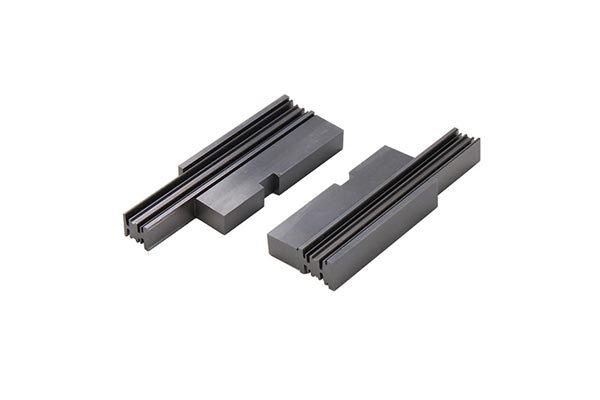
Solutions
Solutions to Chatter Marks during Processing
(1) Adjust feed and cutting speeds: Set reasonable feed and cutting speeds according to the processed material and the performance of the machine tool to avoid the generation of chatter marks due to excessive speeds.
(2) Improve machine tool rigidity: Use machine tools with better rigidity or strengthen the support structure of the machine tool to improve its rigidity and reduce the generation of chatter marks.
(3) Adjust the tool relief angle: According to the processing requirements, reasonably adjust the tool relief angle to avoid the generation of chatter marks caused by an excessively large relief angle.
(4) Ensure firm clamping of the workpiece: Check the workpiece clamping device to ensure that the workpiece is firmly clamped during processing and avoid vibration generation.
Solutions to Chip Blockage
(1) Optimize cutting parameters: Set reasonable cutting depths and cutting speeds according to the processed material and cutting conditions to avoid blockage caused by excessive cutting volume.
(2) Improve the design of the chip flute: Optimize the shape and size of the chip flute to ensure that chips can be discharged on time and avoid blockage.
(3) Increase the supply of cooling fluid: Ensure that the cooling fluid is sufficient and evenly sprayed in the cutting area to reduce the cutting temperature and reduce the adhesion of chips.
Solutions to Rapid Tool Wear
(1) Select appropriate tool materials: Choose appropriate tool materials according to the processed material and cutting conditions to improve the wear resistance of the tool.
(2) Optimize cutting conditions: Reasonably set cutting conditions such as cutting speed, feed rate, and cutting depth to avoid excessive cutting resistance leading to rapid tool wear.
(3) Regularly replace tools: Regularly check the wear condition of tools and promptly replace severely worn tools to avoid affecting processing quality and efficiency.
Solutions to Unqualified Surface Roughness of the Processed Part
(1) Adjust the cutting speed: Set a reasonable cutting speed according to the processed material and tool performance to avoid unqualified surface roughness caused by an excessively low speed.
(2) Control the feed rate: Set a reasonable feed rate according to the processing requirements and the performance of the machine tool to avoid unqualified surface roughness caused by an excessive feed rate.
(3) Regularly grind tool edges: Regularly check the wear condition of tool edges and promptly grind them to maintain their sharpness.
Solutions to Unstable Processing Dimensions
(1) Improve machine tool precision: Use high-precision machine tools or strengthen the maintenance and adjustment of the machine tool to improve its precision and stability.
(2) Select high-quality tools: Use tools with good quality and high precision to reduce the impact of uneven tool wear on processing dimensions.
(3) Strengthen the control of cutting conditions: During the processing, strengthen the monitoring and adjustment of cutting conditions to ensure that the cutting conditions remain stable and consistent.
Schlussfolgerung
The common problems in tungsten carbide processing include chatter marks, chip blockage, rapid tool wear, unqualified surface roughness of the processed part, and unstable processing dimensions. Corresponding solutions can be adopted for these problems, such as adjusting cutting parameters, optimizing the selection of machine tools and tools, and strengthening the control of cutting conditions. Through reasonable process arrangements and effective solutions, the quality and efficiency of tungsten carbide processing can be significantly improved.


